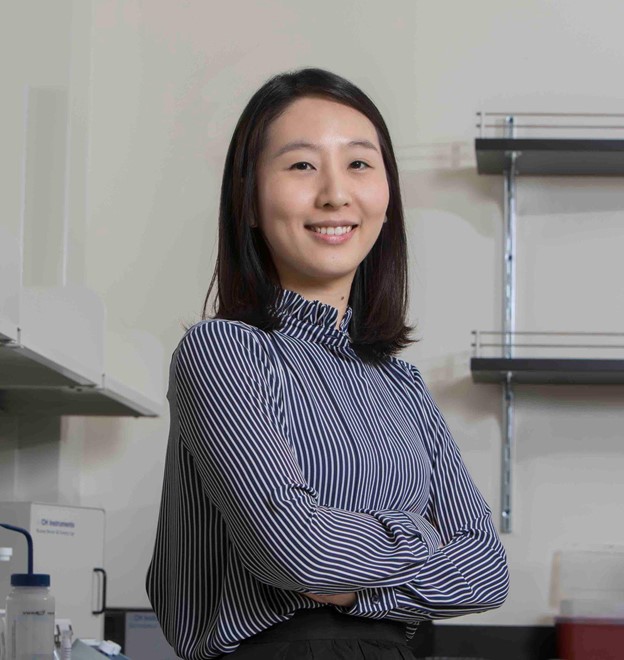Ahyeon Koh, Binghamton University – Health Information Collected Through Sweat
 Are you sweating right now?
Are you sweating right now?
Ahyeon Koh, associate professor in the Thomas J. Watson College of Engineering and Applied Science at Binghamton University, collects perspiration to track our health.
Dr. Koh is currently an associate professor at the Binghamton University Thomas J. Watson College of Engineering and Applied Science.
Her research focuses on overcoming obstacles of conventional biosensors. Her research group is seeking the solution to develop chemically and mechanically biocompatible electrochemical biosensors and intimately bio-integrated sensing systems. Her expertise includes electrochemical biosensors, flexible and stretchable sensors, biocompatible and sustainable sensors and materials, analytical devices for biomedical applications. She is NSF CAREER award recipient in 2023 and publishs high impact peer-reviewed research articles supported by NSF, AFRL, University, and industries.
Health Information Collected Through Sweat
Our sweat tells us a lot of key information about our health. But, current devices that track our sweat lack crucial details. What if there was a new device to paint a more accurate picture?
Collecting human sweat for analysis is a difficult process. Today’s microfluidic devices are worn on the skin and collect sweat chronologically, filling reservoirs one at a time. The issue with this is the belief that there is a continuous flow of sweat; however, our sweating rate changes when we perform different activities throughout the day. The reality is that sometimes we sweat, and sometimes we don’t.
Because of our circadian cycles, it is necessary to know when samples are collected. Cortisol, for example, is a biomarker that can measure stress levels. However, our cortisol levels are high in the morning and decrease in the afternoon.
Our research has developed a superior method for collecting sweat at specific times that produces more accurate results of how a person sweats.
The device would attach to the skin like a patch, allowing users to apply it in the morning and collect sweat as it accumulates throughout the day. Electronics are wired into the reservoirs to track the desired duration. Critical biomarkers linked to stress responses or inflammatory conditions that may benefit athletes, military, and professional workers who sweat regularly.
Our next challenge is to do a full screening to discover what’s in someone’s sweat so we can identify better sweat biomarkers to use as an alternative to blood biomarkers. We hope this new design can improve the quality of analyzing human sweat and help build a healthier future.
This improved way of collecting sweat will better our understanding of critical biomarkers linked to stress responses or inflammatory conditions that may benefit athletes, military, and professional workers who sweat regularly.
I suggest changing this paragraph to identify the (readily) beneficial population.


